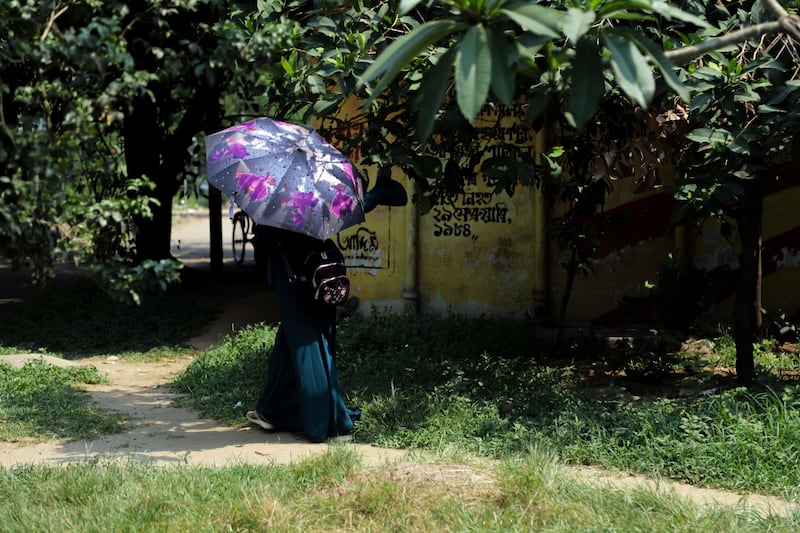Current climate policies will leave more than a fifth of humanity exposed to dangerously hot temperatures by 2100, according a global study published on Monday.
Despite the Paris Agreement pledge to keep global warming well below 2 degrees compared to pre-industrial levels, current policies are projected to result in 2.7 degrees warming by the end of the century.
About 60 million people are already exposed to dangerous heat – defined as average temperature of 29 degrees or higher – but two billion people, or 22 per cent of the projected end-of-century population, would be exposed to this at 2.7 degrees of global warming, it confirms.
Led by researchers at the Global Systems Institute at the University of Exeter, with contributions from the Earth Commission and Nanjing University, the scientists assessed what this would mean for the number of people living outside the “climate niche” in which our species has thrived for centuries.
READ MORE
The paper published in Nature Sustainability, however, highlights the “huge potential” for decisive climate policy to limit the human costs and inequities of climate change.
Limiting warming to 1.5 degrees would leave 5 per cent exposed – saving a sixth of humanity from dangerous heat compared to 2.7 degrees of warming. The World Meteorological Organisation predicted in modelling analysis published last week that containing global average world temperature rise to within 1.5 degrees above pre-industrial levels will be temporarily exceeded at some time by 2027.
The findings highlight the inequity of climate crisis, as future heat-exposed people will live in places where emissions today are about half of the global average.
In “worst-case scenarios” of 3.6 degrees or even 4.4 degrees global warming, half of the world’s population could be left outside the climate niche, posing what the researchers call an “existential risk”.
“The costs of global warming are often expressed in financial terms, but our study highlights the phenomenal human cost of failing to tackle the climate emergency,” said Global Systems Institute director Prof Tim Lenton.
“For every 0.1 degree of warming above present levels, about 140 million more people will be exposed to dangerous heat. This reveals both the scale of the problem and the importance of decisive action to reduce carbon emissions. Limiting global warming to 1.5 degrees rather than 2.7 degrees would mean five times fewer people in 2100 being exposed to dangerous heat.”
Human population density has historically peaked in places with an average temperature of about 13 degrees, with a secondary peak at about 27 degrees, such as in monsoon climates in South Asia.

Density of crops and livestock follow similar patterns, and wealth – measured by GDP -peaks at about 13 degrees. Mortality increases at both higher and lower temperatures; supporting the idea of a human “niche”.
Although less than 1 per cent of humanity lives in places of dangerous heat exposure, the study shows climate change has already put 9 per cent of the global population – or more than 600 million people – outside the niche.
“Most of these people lived near the cooler 13 degrees peak of the niche and are now in the ‘middle ground’ between the two peaks. While not dangerously hot, these conditions tend to be much drier and have not historically supported dense human populations,” said prof Chi Xu of Nanjing University.
“Meanwhile, the vast majority of people set to be left outside the niche due to future warming will be exposed to dangerous heat,” he noted. “Such high temperatures have been linked to issues including increased mortality, decreased labour productivity, decreased cognitive performance, impaired learning, adverse pregnancy outcomes, decreased crop yield, increased conflict and infectious disease spread.”
While some cooler places may become more habitable due to climate change, population growth is projected to be highest in places at risk of dangerous heat, especially India and Nigeria. The paper stresses the worst of these impacts can be avoided by rapid action to cut greenhouse gas emissions.
Speaking about its approach, prof Marten Scheffer of Wageningen University, said: “We were triggered by the fact that the economic costs of carbon emissions hardly reflect the impact on human wellbeing. Our calculations now help bridging this gap and should stimulate asking new, unorthodox questions about justice.”
Ashish Ghadiali of the Global Systems Institute, said: “These new findings from the leading edge of Earth systems science underline the profoundly racialised nature of projected climate impacts and should inspire a policy sea-change in thinking around the urgency of decarbonisation efforts as well as in the value of massively upshifting global investment into the frontlines of climate vulnerability.”
Work on climate solutions by the institute has identified “positive tipping points” to accelerate action, including a recent report that highlighted three “super-leverage points” that could trigger a cascade of decarbonisation.















